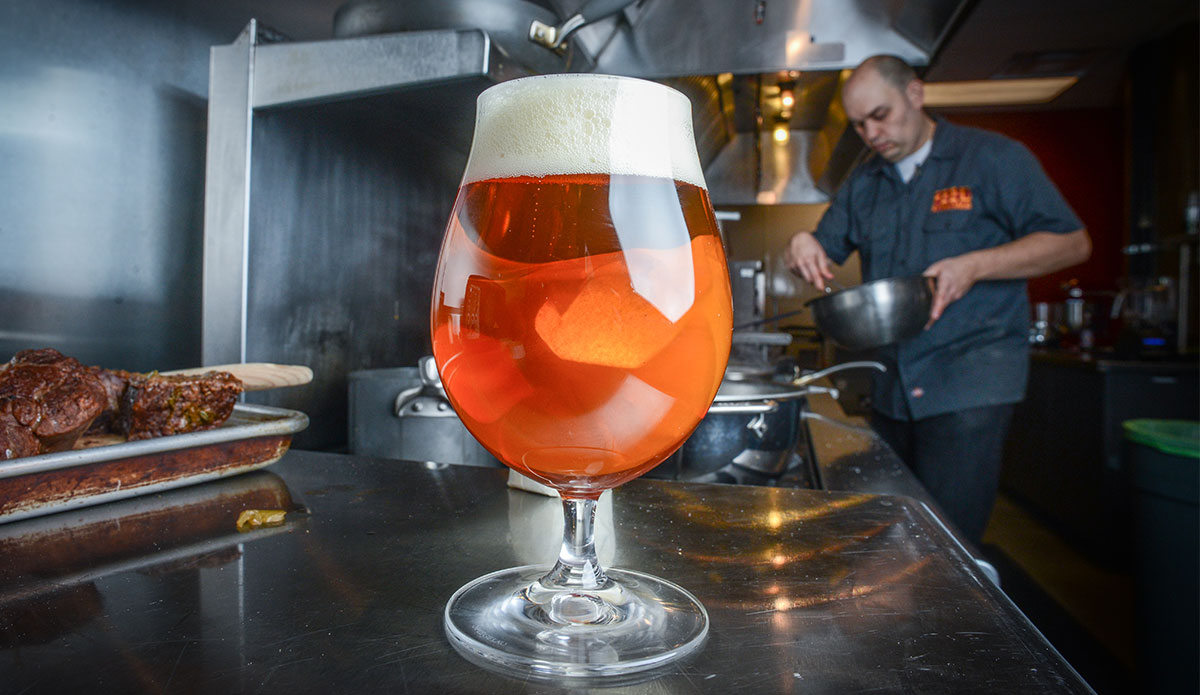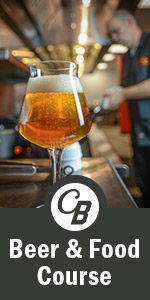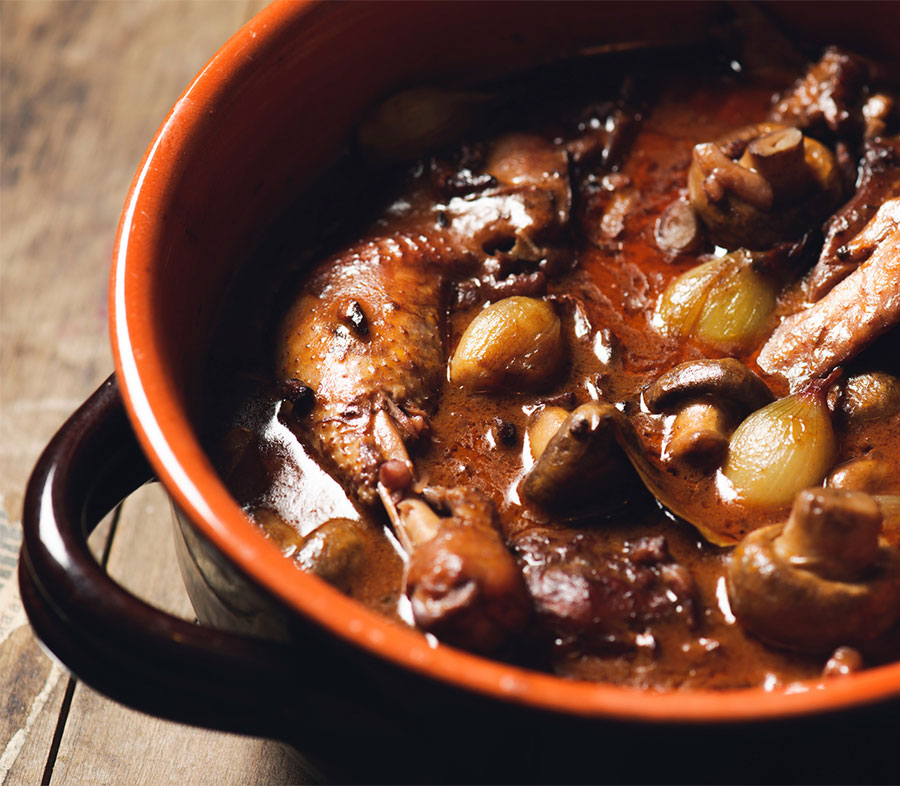As we fire up the grill a few last times, it’s time to start thinking about fall flavors, pairings, indoor cooking techniques, and which beer styles can make any fall day a great pairing day.
As we leave the quick cooking technique of grilling, it’s a good time for a refresher on the what and why’s of the lower, slower more prep intensive recipes that bring about fall flavors. Here are three techniques to help you make that transition this season.
(SEASONALS: Fall Beers That’ll Trigger Nostalgia)
3. Don’t be afraid of the heat
When you go to sear or sauté your vegetables, meat or fish, make sure you wait until your pan is hot enough to develop some color. All too often flavor is left sitting out in the cold by using a cold pan. If the heat is not there at the start of the cooking process then the added bonus of flavor development, caramelization of sugars, Maillard reaction and more will be left outside looking in on a plate with less flavor. Medium high heat is what I’d recommend to get a good solid warm up on your pan. It may take longer than you think; be sure to test it with a piece or two before throwing everything in.
Also, remember not to overcrowd your pan. Overcrowding will turn sautéing into steaming as the steam has no space to escape a crowded pan.
2. Take it low and slow
Simmering is a technique similar to boiling, in that it cooks food through heating water or stock rather than a dry heat method of in an oven or a hot pan. It cooks the food gently and slowly, allowing it to maintain its structure in ways that are impossible with boiling. If you’re cooking fish, simmering allows it to stay in one piece. If you’re cooking meat, simmering keeps it tender and moist instead of drying it out like boiling, which, while faster, actually hardens the proteins and makes a very dry final product.
(COOK WITH BEER: Our Favorite Pumpkin Beer Recipes)
The simmering process actually begins with bringing whatever liquid you’re cooking with to a boil, then reducing the heat until only the occasional bubble appears on the surface every few seconds. Chefs debate over a perfect temperature, but almost everyone can agree it must be below 200℉, and can range from 180 to 190℉. All technical numbers aside, in reality, it’s the lowest possible setting on your range and in many cases the lowest setting combined with the offsetting the pan to a side of the burner.

1. Make time to brine
Ah yes, the question of to brine or not to brine proteins. Brining is an often overlooked step in recipes that when used properly ensures a better final product and ultimately a better pairing for the final dish.
No matter how you cook your meat, moisture loss is inevitable. When you begin to cook meat, heat causes proteins in the fibers to unwind — the culinary term is “denature” — and then they join together with one another, resulting in some shrinkage and moisture loss. In most cases, any protein can lose up to about 30 percent of its weight during cooking. But if you brine the meat first, you may only lose up to 15 or 20 percent. 
(WATCH: Fast Cars and Slow Beers)
Brining enhances meat in several ways. First and quite simply, muscle fibers will absorb liquid during the recommended brining time. Yes, some of this liquid gets lost during cooking, but since the meat is essentially liquid heavy at the start of cooking, it ends up juicier than if you did not brine.
Of all the processes at work during brining, the most vital is the ability of salt to denature proteins. When salt dissolves it causes some of the proteins in muscle fibers to unwind and essentially become larger. Water then gets trapped between these proteins and then when the meat cooks the proteins bind together. Yes, this is what happens anytime you cook meat, brine or no brine, but the key here is the salt in the brine unwinds more proteins, creating larger areas for moisture to stay during cooking. Remember two key things in brining: Reduce your salting after brining and always, always, always pat dry any meats once removed from the brine.
You can wrap all this up into one brining, searing, slow and low process fall recipe with the perfect pairing for fall. I suggest the American brown ale and a rendition of the classic French dish of Coq au Vin using American brown ale.
Go forth. Enjoy fall. Cook it well. Pair it great.
Cheers.
CraftBeer.com is fully dedicated to small and independent U.S. breweries. We are published by the Brewers Association, the not-for-profit trade group dedicated to promoting and protecting America’s small and independent craft brewers. Stories and opinions shared on CraftBeer.com do not imply endorsement by or positions taken by the Brewers Association or its members.


Share Post